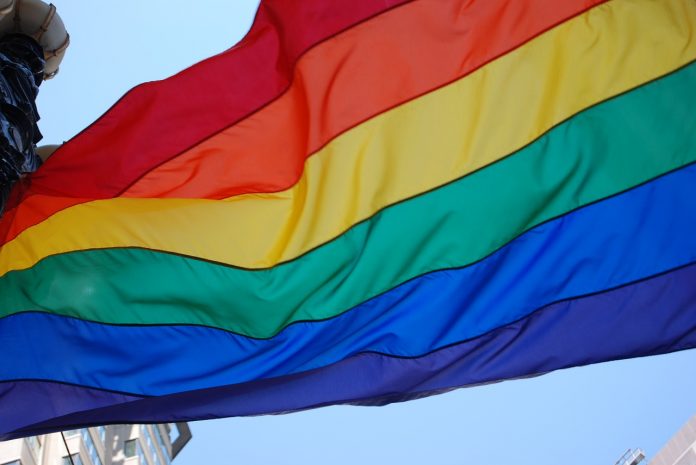This article is written by Harsh Gupta pursuing BA.LLB from School of law, HILSR, Jamia Hamdard. This is an exhaustive article which deals with the dichotomy between the judgement of Nalsa v. UOI and the Transgender Persons Act, 2019 in a comprehensive manner.
Table of Contents
Introduction
The Transgender Persons Act, 2019 and its accompanying rules of procedure collectively collapse under the weight of the NALSA judgment as well as the right to equality, dignity, bodily autonomy, privacy, self-identification, and freedom from unwarranted medical intervention. Several important terms are vaguely defined in that act, such as ‘transgender’ and ‘discrimination’. Additionally, the legislation does not make any specific provisions for civil or criminal remedies in the guarantee against discrimination for individuals with an intersex variation. The Act also provides a punishment of up to two years imprisonment and a fine for sexual abuse of transgender people. Cis-women, however, are often punished harsher, even facing life imprisonment for sexual assaults. As envisaged in Article 14 of the Indian Constitution which guarantees equal protection of the law to all persons, the application of different punishments based on the sexual orientation of the individual does not exhibit any discernible difference and does not satisfy the reasonable classification test and the standard of arbitrariness. Here, the author explains the differences between the Transgender Person Act, 2019 and the proposed ruling in NALSA v. Union of India (2014).
Overview of the Transgender Persons Act, 2019
The recent passing of the Transgender Persons (Protection of Rights) Bill, 2018, by the Lok Sabha has caused concern. There have been protests on the streets and campaigns against parliamentarians by transgender and intersex rights activists. Doesn’t it seem ironic that all of this is being done to prevent the law from being passed? Why is there such strong opposition to this bill? The following are the main concerns.
Taking gender into account
The Supreme Court had affirmed in its landmark judgment in NALSA v. Union of India that transgender and intersex persons have a constitutional right to self-identify as male, female, or transgender without medical intervention. According to the Court, “Each person’s self-defined gender identity and sexual orientation is integral to their self-determination, dignity, and freedom, and no one shall be forced to undergo medical procedures or hormonal therapy to obtain legal recognition.” In other words, medical procedures should not be a pre-requisite for any identity document for transgender and intersex individuals, nor should a mental health assessment be required. A requirement for a person to submit proof of medical treatment or a mental health assessment of their gender identity violates two rights of a person: the right to dignity and the right to be free from unwarranted medical treatment.
In Section 6 of the 2018 Bill, a District Screening Committee is established to recognize transgender people. The Screening Committee consists of a chief medical officer and a psychologist/psychiatrist, indicating that medical and psychological tests would be required for a change of gender identity. The Bill does not permit gender change without medical or psychological treatment.
Also, the Bill denies the recognition of gender identity as male or female. Identity certificates can only be issued to transgender people. Contrary to the Supreme Court’s decision, under this policy, people will automatically be classified as either male, female, or transgender. The policy will also require intersex people to choose gender identities as ‘transgender.’
A law that allows people to change their gender without surgery was first introduced in the U.K. in 2004 under the Gender Recognition Act. There are now other countries, including Argentina, Ireland, and Denmark, that allow people to self-declare their gender instead of being approved by a panel of experts.
The 2018 Bill should be amended and the District Screening Committee needs to be removed. This Bill should state explicitly that no medical or mental health examination will be required and applicants will simply be required to submit an affidavit attesting their gender identity change request.
Reservations are not provided
Throughout Bill’s debate, reservations for transgender and intersex persons have always been demanded, since these are seen as crucial for their social inclusion. Not only was this mandated by the Supreme Court in NALSA, but also by the Rights of Transgender Persons Bill 2014.
Surprisingly, the 2018 Act makes no provision for reservations. According to Section 10 of the Act, educational and employment discrimination would be prohibited, however, these protections are meaningless if transgender individuals are unable to gain access in the first place. The principle of equality requires that the transgender and intersex community be provided with horizontal accommodations in education and employment so that they can access their basic social rights. In the new Rights of Persons with Disabilities Act 2016, there were reservations of 5% in education and 4% in government jobs. It is therefore surprising that the 2019 Act does not include similar provisions.
Lives are being criminalized
Anyone who forces a transgender person to beg is committing a crime in Section 19 of the Transgender Persons Act, 2019. There are serious ramifications to this. The trans and intersex communities have a large number of people who are engaged in begging and sex work because they are discriminated against and have few other options. Members of the transgender community would be criminalized under this provision. In light of the Delhi High Court’s ruling that criminalizing begging itself is unconstitutional, this offence should have no place in the 2019 Act. Transgender people have been criminalised for too long for being in the streets and public, and including this offence in the Act will further criminalize them.
The Act is seriously flawed in all of these ways. It does not have a whole range of positive rights such as those for trans and intersex persons about the inheritance of property, adoption, and freedom from domestic violence, or rights for participation in politics and the right to health, including free sex reassignment treatments. Similarly, it does not criminalize sexual violence against transgender and intersex individuals. Transgender persons do not have a criminal claim for sexual assault under the current law, which has gender-specific provisions.
Transgender and intersex persons should take advantage of this opportunity to ensure their constitutional rights are respected.
Supreme Court’s judgment in NALSA v. Union of India
Facts
A case was filed by the National Legal Services Authority of India (NALSA) to recognize persons who do not fit into the male/female gender binary, including persons who identify as a ‘third gender’. The Apex Court clubbed two writ petitions which were filed to protect the rights and identity of the transgender community. NALSA, which was established by the Legal Services Authority Act, 1997, filed one writ petition. Poojaya Mata Nasib Kaur Ji Women Welfare Society also filed a Writ Petition No. 604 of 2013 seeking similar relief for Kinnars, a TG community.
As an asserted Hijra, Laxmi Narayan Tripathy represented the transgender community before the Court and expressed his suffering for the recognition of gender identity in the third gender category. Tripathy argued before the Court that when they are denied their right to practice their sexual orientation because they are not recognized as a third gender, they lose that right. It violates their right to equality and equal protection of the law guaranteed by Article 14 of the Constitution and their right to dignity guaranteed by Article 21 of the Constitution.
Issues
From the facts, it is evident that the petitions raise substantially the issue of ‘gender identity’, as the primary issue in the case. The issue has two facets:
- Whether a person who is born as a male with predominantly female orientation (or vice versa), has a right to get himself/herself to be recognized as a female as per his/her choice more so, when such a person after having undergone the operational procedure, changes his/her sex as well;
- Whether transgenders (TGs), who are neither males nor females, have a right to be identified and categorized as ‘third gender’?
Judgment
To protect the rights of transgender persons under the assurance provided in the Constitution of India, it has been declared:
- Hijras and Eunuchs, apart from binary gender, belong to the ‘third gender’ under the provision of part III of the Constitution.
- Transgender individuals have been guaranteed the right to decide their gender identity, and the State has to protect their legal recognition as a ‘third gender’.
- It directed the government to develop mechanisms to protect the rights and ensure the welfare of ‘third gender’/transgender persons.
Defining ‘Third Gender’
A person’s right to self-identify their gender was upheld by the court. Furthermore, it declared that hijras and eunuchs can recognize themselves as ‘third gender’.
As the Court clarified, gender identity does not refer to a biological characteristic but rather to an individual’s ‘innate perception of gender’. Therefore, it held that no third-gendered person should be subjected to any medical examination or biological test that would violate their right to privacy.
Fundamental rights
The Court interpreted ‘dignity’ under Article 21 of the Constitution to include diversity in self-expression, which allowed a person to lead a dignified life. It placed one’s gender identity within the framework of the fundamental right to dignity under Article 21.
Further, it noted that the right to equality (Article 14 of the Constitution) and freedom of expression (Article 19(1)(a)) was framed in gender-neutral terms (‘all persons’). Consequently, the right to equality and freedom of expression would extend to transgender persons.
According to the report, transgender people suffer “extreme discrimination in all spheres of society,” which constitutes a violation of their right to equality. Additionally, it included the right to express one’s gender “through dress, words, action, or behaviour” as part of the freedom of expression.
It is expressly prohibited to discriminate based on a person’s ‘sex’ in Article 15 and Article 16. Court held that ‘sex’ does not only refer to biological characteristics (such as chromosomes, genital features, and secondary sexual characteristics) but also to ‘gender’ (based on self-perception). As a result, the Court held that discrimination based on ‘sex’ included discrimination based on gender identity.
Therefore, the Court held that transgender people have fundamental rights under Articles 14, 15, 16, 19(1)(a) and 21 of the Constitution. To recognize the rights of transgender persons, the Court also referred to core international human rights treaties and the Yogyakarta Principles.
Further directions
To fight the stigma against transgender people, the court held that public awareness programs were necessary. The state and federal governments were also directed to take several steps to advance the transgender community, including:
- Making sure all documents recognize the ‘third gender’
- Recognizing third gender individuals as a ‘socially and educationally backward class of citizens’ entitled to reservation in educational institutions and public employment.
Significance
India has only recently legalized the recognition of non-binary gender identities and fundamental rights for transgender individuals. This is a landmark decision. As part of the judgment, the Central and State governments were directed to take proactive measures to guarantee the rights of transgender people and the same should be ensured by the State during all times.
The conflict between the Act and NALSA judgment
In NALSA v. Union of India, transgender people were given equal protection under the Constitution, and their rights were to be guaranteed. Individuals’ rights are recognized when they self-identify as belonging to a particular gender. Moreover, the Supreme Court ruled that ‘sex’ discrimination extends not only to biological sex but also to the ‘innate perception of one’s gender’, i.e. the gender that the trans individual identifies with. It was acknowledged that gender identity plays an integral role in defining one’s personality and is a basic tenet of leading a dignified life. Despite being a landmark judgment and an important milestone in the transgender community’s struggle for equal rights, it did not guarantee their equal treatment or provide a path to a life of dignity.
As a result of the 2014 judgement, the Parliament has introduced a series of bills addressing the rights of transgender people. Most recently, the Transgender Persons (Protection of Rights) Act of 2019 was introduced in July 2019. Since it nullifies the NALSA judgment, the transgender community has responded negatively to it. They claim that the new law will not only be insufficient but that it will also revert the gains made to secure the rights of transgender people.
The NALSA ruling recognized the principle of ‘self-declaration as the only legal means by which gender can be determined, sans psychological or medical evidence. Similarly, the verdict held that any insistence on sex reconstruction surgery is immoral and illegal. In this case, the ruling followed the best practices and standards of international law. The United Nations, for example, requires that medical and legal processes of gender reassignment for transgender people be separate, including the removal of evaluations from psychologists, physicians or other experts.
Specifically, the Transgender Persons Act 2019 mandates under Section 5 that to legally recognize a transgender identity, an individual must apply for a ‘Transgender Certificate’, which will label their gender as transgender. As part of the new rules, however, the individual must submit a psychologist’s report for the ‘Certificate of Identity’. Additionally, if the individual undergoes surgery to change their gender to male or female, they need to obtain a ‘revised certificate’ from the District Magistrate. If they can submit proof of their gender confirmation surgery, then the District Magistrate has the power to judge the ‘correctness of the application. It is cumbersome and intrusive to identify and reassign genders under this draft rule. As far as judging accuracy is concerned, the rules are unclear. Furthermore, administrators do not need to undergo any training in the subject matter. In addition, to exacerbate humiliation, the inclusion of psychologists, medical proofs, and district administrators goes against the recognition of the right to ‘self-declaration’ outlined in NALSA.
Abusing transgenders is a punishable offence with a jail term of six months to two years under Section 18(d) of the Transgender Protection Act, 2019. It can lead to a life sentence or even death for a crime against a cisgender woman (a person who identifies as their gender at birth). The provision of a lesser punishment reinforces the unequal status of the trans community. Furthermore, the Act is ambiguous regarding the rights and benefits of trans individuals. According to the verdict, the government must establish affirmative action measures to increase transgender representation at educational institutions and in government positions.
Conclusion
The Apex Court, in NALSA vs Union of India, accorded the transgender community an equal constitutional status under the Indian legal matrix for the first time, recognized their fundamental rights under Part-III of the Constitution, including, among others, gender equality and self-dignity. According to the Indian Constitution, Article 15 explicitly prohibits any discrimination based on gender, any violation of these rights amounted to a violation of human rights.
However, the judgment offered no legislative framework to operationalize the rights promulgated by the court, despite maintaining the cherished principles of equality, freedom, and freedom of expression. The Transgender Persons (Protection of Rights) Act, 2019 to provide a statutory basis for constitutional rights and establish procedures to enforce them, was enacted in December 2019. Note that the previous three drafts of this Act, introduced in 2014, 2016, and 2018, lapsed in the Parliament for their regressive provisions, such as the establishment of a ‘screening committee’ to determine if a person was transgender. Thus, the 2019 Act removed many of these reprehensible provisions and sought to prohibit discrimination against transgender people while advocating for welfare provisions for historically marginalized communities.
References
- https://www.orfonline.org/expert-speak/pride-month-2020-68965/
- https://www.thehindu.com/opinion/op-ed/a-law-that-defeats-its-purpose/article25854190.ece
- https://translaw.clpr.org.in/case-law/nalsa-third-gender-identity/
- https://www.jurist.org/commentary/2020/10/ayush-mishra-transgender-india/
- https://indianlawportal.co.in/case-analysis-nalsa-v-union-of-india-and-ors/
Students of Lawsikho courses regularly produce writing assignments and work on practical exercises as a part of their coursework and develop themselves in real-life practical skills.
LawSikho has created a telegram group for exchanging legal knowledge, referrals, and various opportunities. You can click on this link and join:
https://t.me/joinchat/J_0YrBa4IBSHdpuTfQO_sA
Follow us on Instagram and subscribe to our YouTube channel for more amazing legal content.
 Serato DJ Crack 2025Serato DJ PRO Crack
Serato DJ Crack 2025Serato DJ PRO Crack










 Allow notifications
Allow notifications



